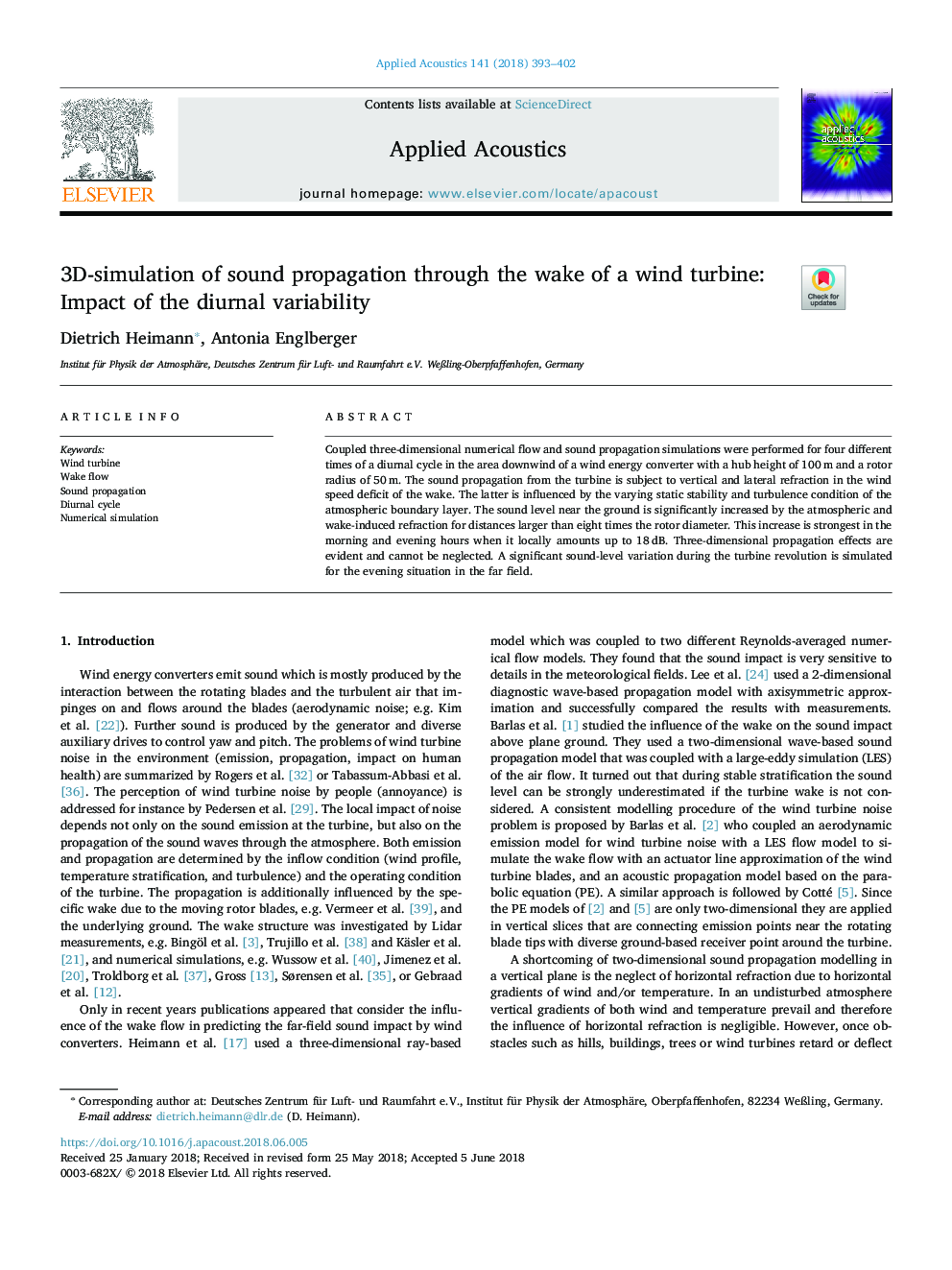| Article ID | Journal | Published Year | Pages | File Type |
|---|---|---|---|---|
| 7152036 | Applied Acoustics | 2018 | 10 Pages |
Abstract
Coupled three-dimensional numerical flow and sound propagation simulations were performed for four different times of a diurnal cycle in the area downwind of a wind energy converter with a hub height of 100â¯m and a rotor radius of 50â¯m. The sound propagation from the turbine is subject to vertical and lateral refraction in the wind speed deficit of the wake. The latter is influenced by the varying static stability and turbulence condition of the atmospheric boundary layer. The sound level near the ground is significantly increased by the atmospheric and wake-induced refraction for distances larger than eight times the rotor diameter. This increase is strongest in the morning and evening hours when it locally amounts up to 18â¯dB. Three-dimensional propagation effects are evident and cannot be neglected. A significant sound-level variation during the turbine revolution is simulated for the evening situation in the far field.
Related Topics
Physical Sciences and Engineering
Engineering
Mechanical Engineering
Authors
Dietrich Heimann, Antonia Englberger,
